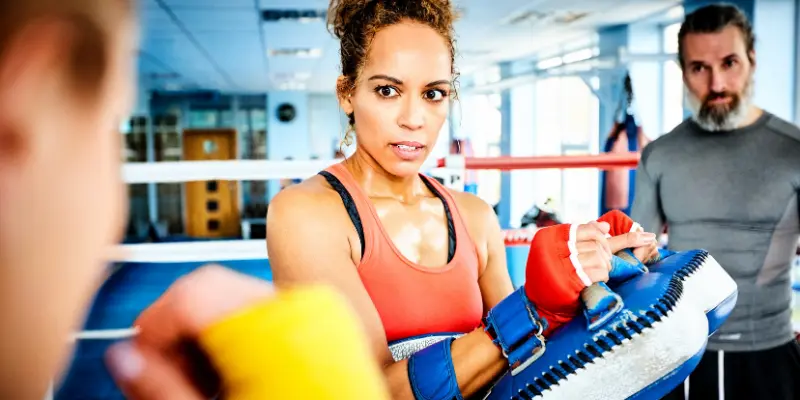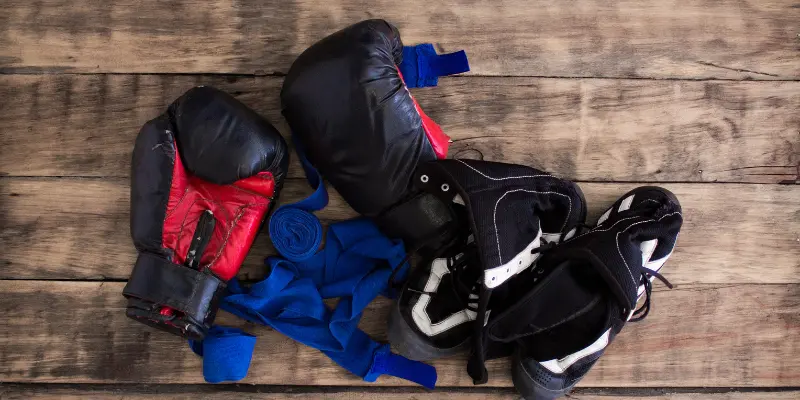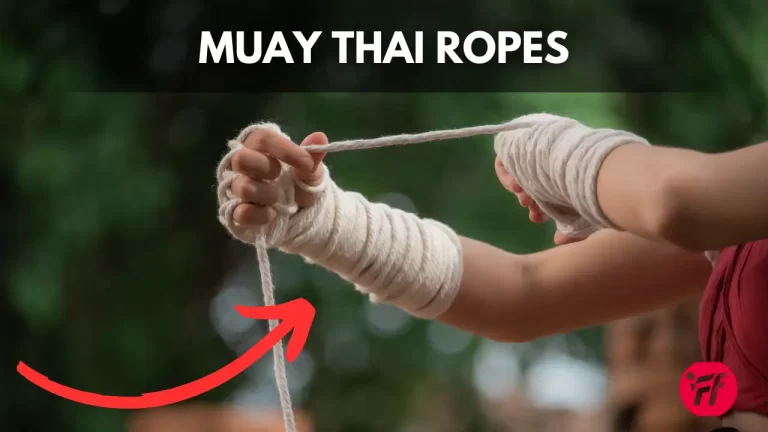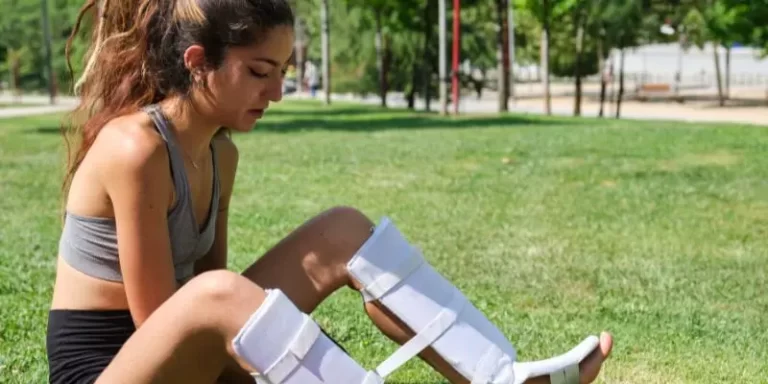How Much are Kickboxing Classes? Cost & Detail For Newbies
Are you ready to punch your way to fitness and confidence? Kickboxing classes offer an exciting path to self-improvement. From costs and gear to the benefits of commitment, we will guide you through the world of kickboxing classes, helping you make the best choice for your journey to a healthier, more empowered you. If you are searching about the How Much is Kickboxing Classes, You are at the right place. Here you can get all the information about the kickboxing and classes.
Kickboxing is a great way to get in a full-body exercise. Pace yourself and pay attention to body language regarding how many Kickboxing sessions you undertake each week if you are in poor physical condition and want to improve it.
Kickboxing supports almost every muscle in your body. The most weak portions of your body are your arms, legs, core, and shoulders, but other regions of your body will be affected as well. You will also notice an improvement in the quality of your daily life as your joints and ligaments become supple and robust.
How much is kickboxing classes
Many things affect How Much is Kickboxing Classes. Quickly you can get information. One big factor is where you start. If you are not very healthy, to begin with, it might take more time to reach your fitness goals. When you’re just beginning kickboxing, you should start with shorter and less frequent training sessions to get used to it. This will affect how long it takes to see significant changes in your fitness. As mentioned before, doing three workouts a week is sufficient to lose fat and get into shape.

In about two months of kickboxing training, you will start to see more defined muscles and less body fat. Your body will change how it looks. Also, your tendons will become more flexible, allowing you to do more advanced techniques in your workouts, making you feel more flexible.
Once you have built up good cardiovascular fitness, you can make your workouts harder if you’d like. This means you can have longer sessions or even add an extra workout to your week. If you stick with it for another two or three months, you will become really fit, feel less stressed, and be more confident in yourself.
Experts’ recommendation For kickboxing classes
If you practice kickboxing 3-4 times a week in just 6 months, you will see powerful improvement. After another 6 months, you’ll double your skills. While progress might slow down after that, the time you invest will still be rewarding.
Experts recommend abot the How Much is Kickboxing Classes training in kickboxing about three times a week for excellent overall fitness results. This routine works well to strengthen your arms, core, and lower body while also enhancing your flexibility, balance, and coordination.

If you’re aiming to become a competitive kickboxer, then you will need to train more frequently, around 5 to 6 times a week. Professional kickboxers often practice 6 times weekly and include cardio and strength workouts to enhance their skills. Competition demands top physical condition, calling for strong discipline and conditioning. Becoming a master in kickboxing takes several years of dedicated effort.
Essential Gear for Kickboxing Classes
When you joining classes, you’ll need some basic best kickboxing equipment. What you require can depend on where you take classes and how intense they are. Generally, you will need your regular workout clothes and sneakers, along with hand wraps and gloves, to protect your hands.
For home kickboxing, a punching bag is an essential piece of equipment. They come in various types. Free-standing bags, filled with water or sand, are easy to move and store. Hanging bags suspended from the ceiling offer a heavier and more durable option. Your choice depends on your space and training needs, with leather bags being pricier but more durable. If hanging isn’t an option, consider a bag stand for around.
Gloves and Hand Wraps
When you’re training at a kickboxing club, gloves and hand wraps are a must. Hand wraps protect your fingers, knuckles, and wrists, costing between $5 and $20. They offer quick and comfy protection. You’ll also need gloves, and while you can find them for as little as $20 or as much as $450, it’s best to invest around $50-$100 for quality and safety. The Venom Impact Boxing Gloves are a great choice for beginners, offering support and comfort at a reasonable price.
Foot Wraps

If you prefer without shoes, you might consider using kickboxing foot wraps. They’re not too expensive, and Some foot wraps even come with a gel layer for added foot protection and grip pads to prevent you from slipping on the mat.
More Protection You Could Need
Depending on your kickboxing goals, you might need some extra gear, especially if you plan to spar or compete.
If your plans include sparring or competitive kickboxing, here’s a list of protective equipment you might require, along with the estimated costs:
Tips Before You Take Kickboxing Classes
Before enrolling in a kickboxing class, you should take into account a few basic rules.
1. Is Your Fitness Ready for the Classes?
Kickboxing is a vigorous and intense workout, and it may not be suitable for everyone, especially if you’ve been inactive for a long time. It’s a good idea to see your doctor and get checked for any chronic illnesses that might make strenuous exercise unsafe, just to be cautious.
2. Determine the Instructor’s Qualifications.
Why would you want to learn from an instructor who isn’t skilled? It’s important to check if they are a certified fitness instructor and have a high-level martial arts belt before you sign up. This ensures that they can guide you as an expert and help you learn properly.
3. Drink plenty of water.

Staying well hydrated before, during, and after kickboxing classes is very important. Kickboxing is a great exercise because it helps with conditioning discipline and provides a good aerobic workout. Whether you’re training for competition or just to stay in shape, it’s good for your overall health and well-being.
4. Check it out Before You Enroll, Take a Look.
Some people might consider joining kickboxing classes just because it seems popular or everyone is doing it. Before you decide to join, take some time to be sure it’s what you really want. You can watch a few classes and see if it feels right for you or if you still enjoy it.
5. Begin Gradually, Following Your Own Pace.
The important thing in exercise, especially when you’re new to kickboxing, is to avoid pushing your body too hard. Overexertion and going too far with your movements can lead to injuries like sprained ankles, pulled muscles, and strained tendons, among other things. So, take it easy and don’t overdo it.
6. Kickboxing Gear and Equipment
Kickboxing involves some important gear for safety and performance.

A. Gloves:
Gloves are like protective armor for your hands. In kickboxing or boxing, they keep your fists safe and help avoid injuries. These padded gloves act as a cushion, so when you throw punches, your hands are well-guarded, reducing the chances of getting hurt.
B. Protective Headgear:
“Protective headgear is like a special helmet for your head in kickboxing or boxing. It’s designed to keep your head safe and protect you from getting hurt. Just as a bicycle helmet safeguards your head while riding, this gear helps prevent injuries during fights.”
C. Mouth Guard:
A mouth guard is like a shield for your mouth and jaw, particularly your teeth. In kickboxing or other contact sports, it’s essential to wear one to protect your mouth and keep your teeth safe from any accidental impacts. It’s like a safety cover for your smile during the action.
D. Tops/Pants/Trousers:
Tops, pants, and trousers for kickboxing are special outfits designed for easy movement. These clothes let you kick and punch comfortably without any restrictions. They’re like your kickboxing uniform, allowing you to move freely and train effectively.
E. Special Hand Wraps:
Special hand wraps are like protective shields for your knuckles and wrists in kickboxing. They wrap around your hands before you put on gloves, offering extra safety. They keep your hands secure, making sure you don’t hurt your knuckles or wrists during training.
F. Shin Pads/Guards:
Shin pads or guards are like shields for your legs, similar to what basketball players wear. In kickboxing, they protect your shins from getting hurt. Just as basketball guards the legs, these guards prevent leg injuries during training and fights.
G. Special Kickboxing Boots:
Special kickboxing boots are like super-comfortable shoes that help you move quickly and easily. They’re designed for agility, so you can kick, punch, and dance around the ring. These boots are like the secret to staying light on your feet during kickboxing.
Some kickboxing studios don’t need all these things, especially for beginners who only practice with a punching bag. In those cases, you can usually wear your usual gym clothes, and that’s just fine.
Calories Burned During a Kickboxing Class
The number of calories you burn on the base of How Much is Kickboxing Classes, when you are active depends on several factors, and it is not the same for everyone. Your age, gender, and how hard you’re working out all play a role in how many calories you will burn.

According to the experts, they suggest you can burn around 1,200 calories in one of their classes. However, for most people, a typical one-hour kickboxing session might help them burn about 700 calories. Keep in mind these numbers can vary from person to person.
Kickboxing is an excellent choice for weight loss because it burns a lot of calories. Weight loss can be simplified as a balance between the calories you eat and the calories you burn. To lose one pound, you typically need to burn around 3,500 calories more than you consume.
Average Price of Kickboxing Classes
Prcing mater that How Much is Kickboxing Classes, Kickboxing studios typically charge on a monthly basis. The cost of kickboxing classes can vary, with unlimited classes ranging from $70 to $140 per month. Some studios also offer the option to pay per class, with walk-in rates usually around $10 each. Additionally, some studios may ask members to commit to yearly contracts, with an enrollment fee starting at $75 to $125.
Some kickboxing studios provide bundle classes where you can purchase a set of 20 sessions, which typically costs around $275.

When you opt for a longer commitment at the American Kickboxing Academy, the cost for unlimited kickboxing classes is as follows:
These options provide some discounts for those who are willing to commit to longer-term Memberships.
Also Check: Women Kickboxing Classes For Beginners – Training Programs
Are Kickboxing Classes Worth the Price?
It’s a good question, but the answer depends on your perspective and what you’re getting in return. Whether kickboxing classes are worth the cost varies from person to person.
If you want to enhance your skills, stay motivated, or have plans to compete, then kickboxing classes can be a valuable investment. Extra Price depends on the How Much is Kickboxing Classes.
Typically, the cost of kickboxing club memberships should fall within the national average range of $60 to $225. For this price, you should expect to receive unlimited classes with excellent instruction tailored to your specific needs and goals. It’s all about what you’re looking to achieve and the value you place on it.
Additional Costs
The cost of kickboxing classes can vary, especially if studios don’t offer free gear. Not all studios provide new members with fighting gloves, headgear, or other protective equipment for free. So, be prepared to bring your gear when you decide to start kickboxing classes.
Final Thoughts
In conclusion, kickboxing offers an exciting path to fitness and self-defense. Whether you train at home or in a club, choosing the right gear and equipment is important for safety and effectiveness. Remember to invest in quality gloves, protective gear, and clothing, but also consider what’s necessary for your specific training. Kickboxing is about staying fit, learning, and staying safe, so enjoy the journey.
In today’s fast-paced world, our daily lives can be quite stressful. Kickboxing classes offer a great way to release your pent-up frustrations on a punching bag. If you are tired of the traditional gym routine of lifting weights and are seeking something more exciting and dynamic, kickboxing is an excellent choice. You can even find video tutorials, but keep in mind that some moves may be challenging to do without a training partner nearby. In this article, we covered all about How Much is Kickboxing Classes.
FAQs
1. What is kickboxing?
Kickboxing is a sport where people punch and kick, often as part of a workout or for self-defense.
2. How much do kickboxing classes cost?
The cost of kickboxing classes can vary, from $10 per class to monthly memberships that range from $60 to $225.
3. Do I need special equipment for kickboxing?
You might need gloves, hand wraps, and workout clothes. But not all studios require the same gear.
4. Is kickboxing good for getting fit?
Yes, kickboxing is a great way to improve fitness, build strength, and learn self-defense.
5. Can I do kickboxing at home?
Yes, you can practice kickboxing at home with a punching bag and the right equipment.
6. Do I have to be in good shape to start kickboxing?
No, kickboxing is for people of all fitness levels. You can start at your own pace and improve over time.







